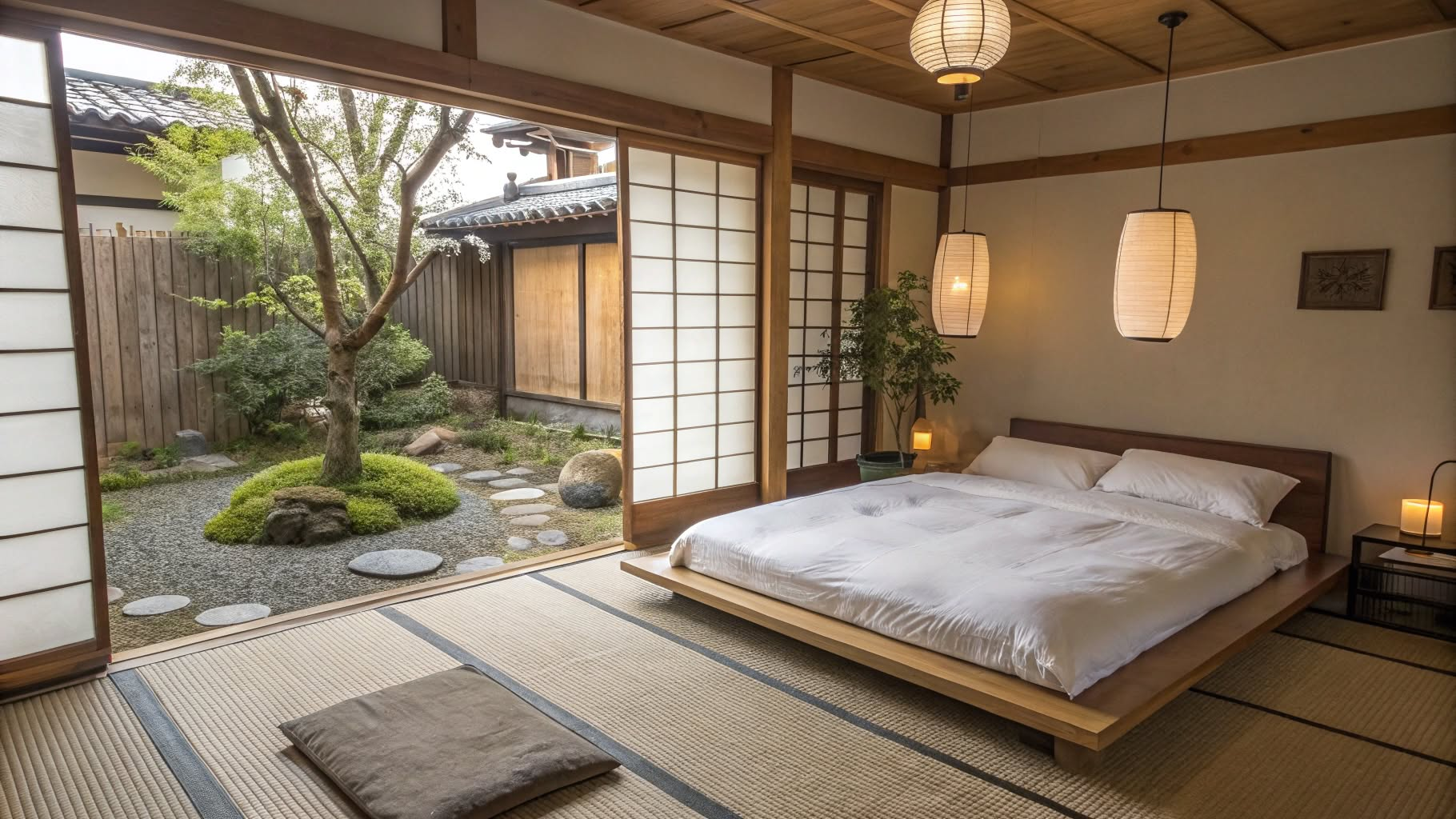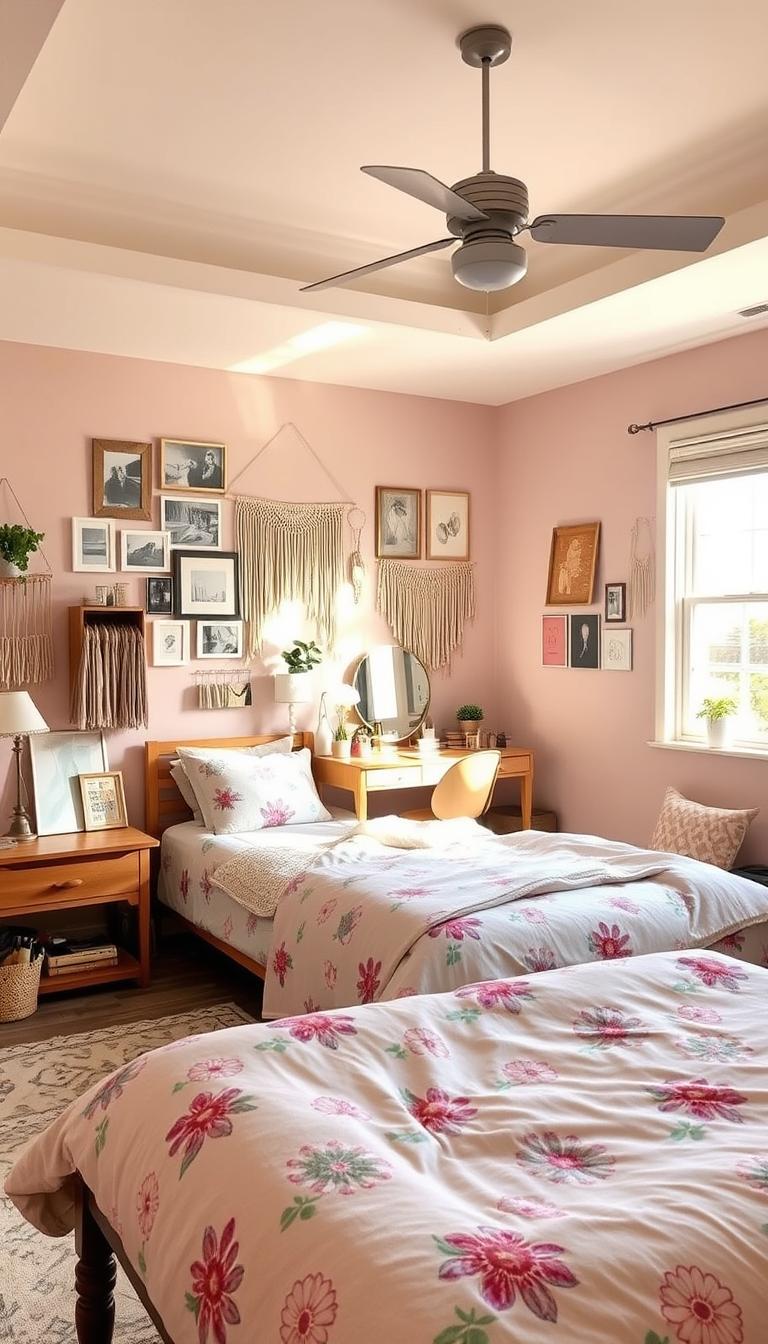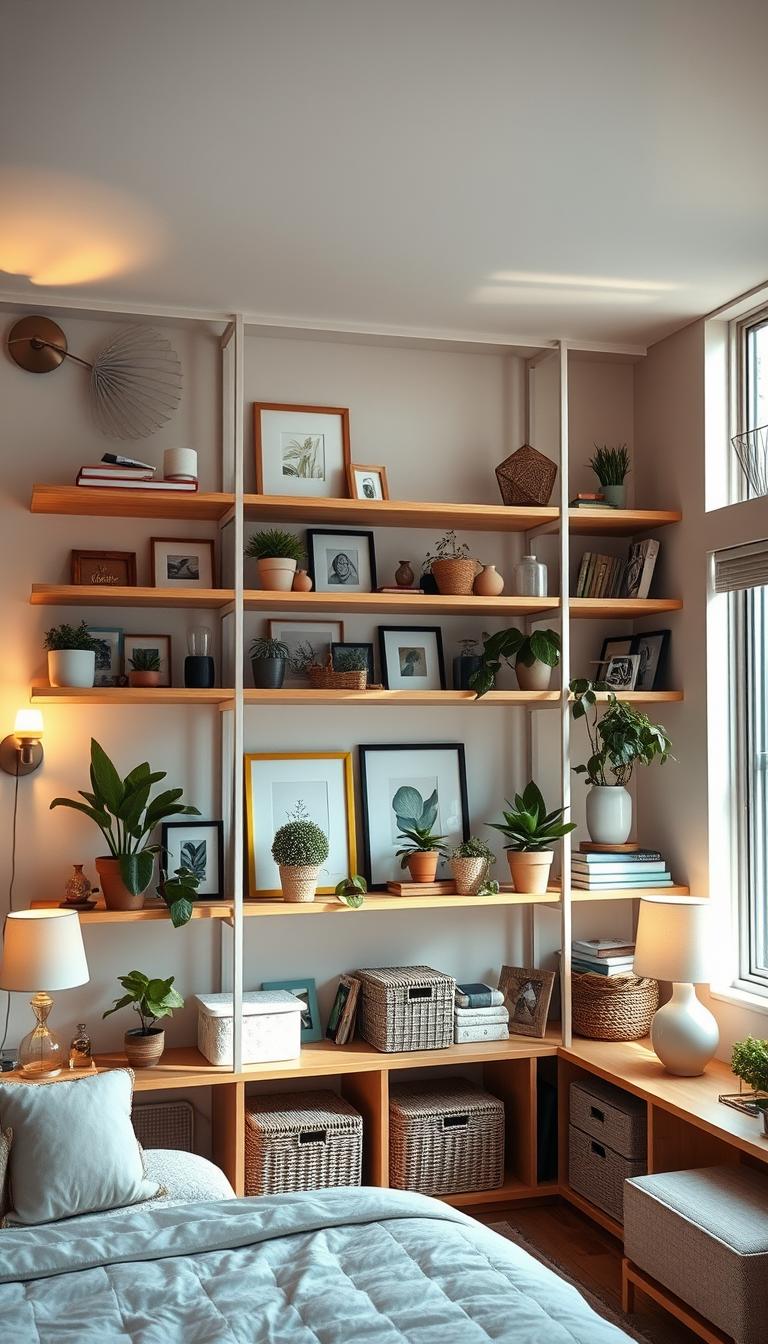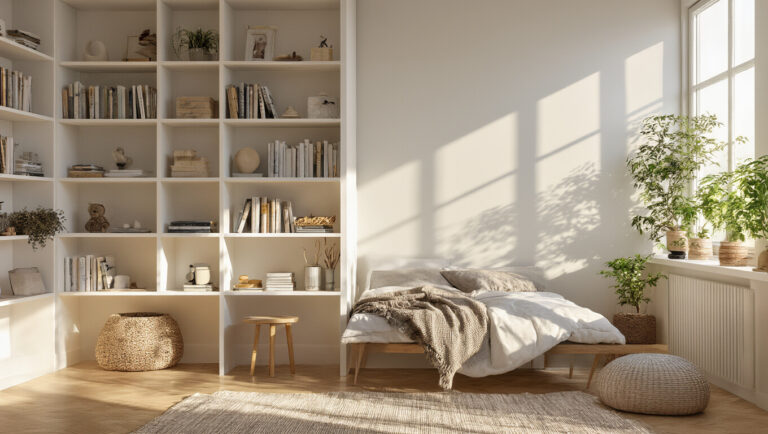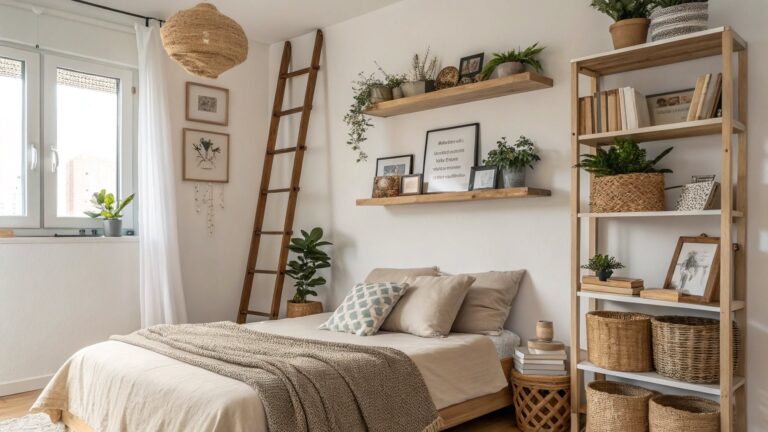15 Japanese Bedroom Ideas For Serene Simplicity
Step into the world of Japanese design, where simplicity meets serenity. Japanese bedrooms are renowned for their minimalist elegance, natural materials, and Zen-inspired aesthetics.
Whether you’re looking to create a peaceful retreat or simply want to infuse your space with tranquility, these 15 Japanese bedroom ideas will inspire you to embrace the beauty of less.
From tatami mats and shoji screens to calming color palettes and thoughtful decor, discover how to transform your bedroom into a haven of calm and simplicity.
1. Embrace Minimalist Futon Beds
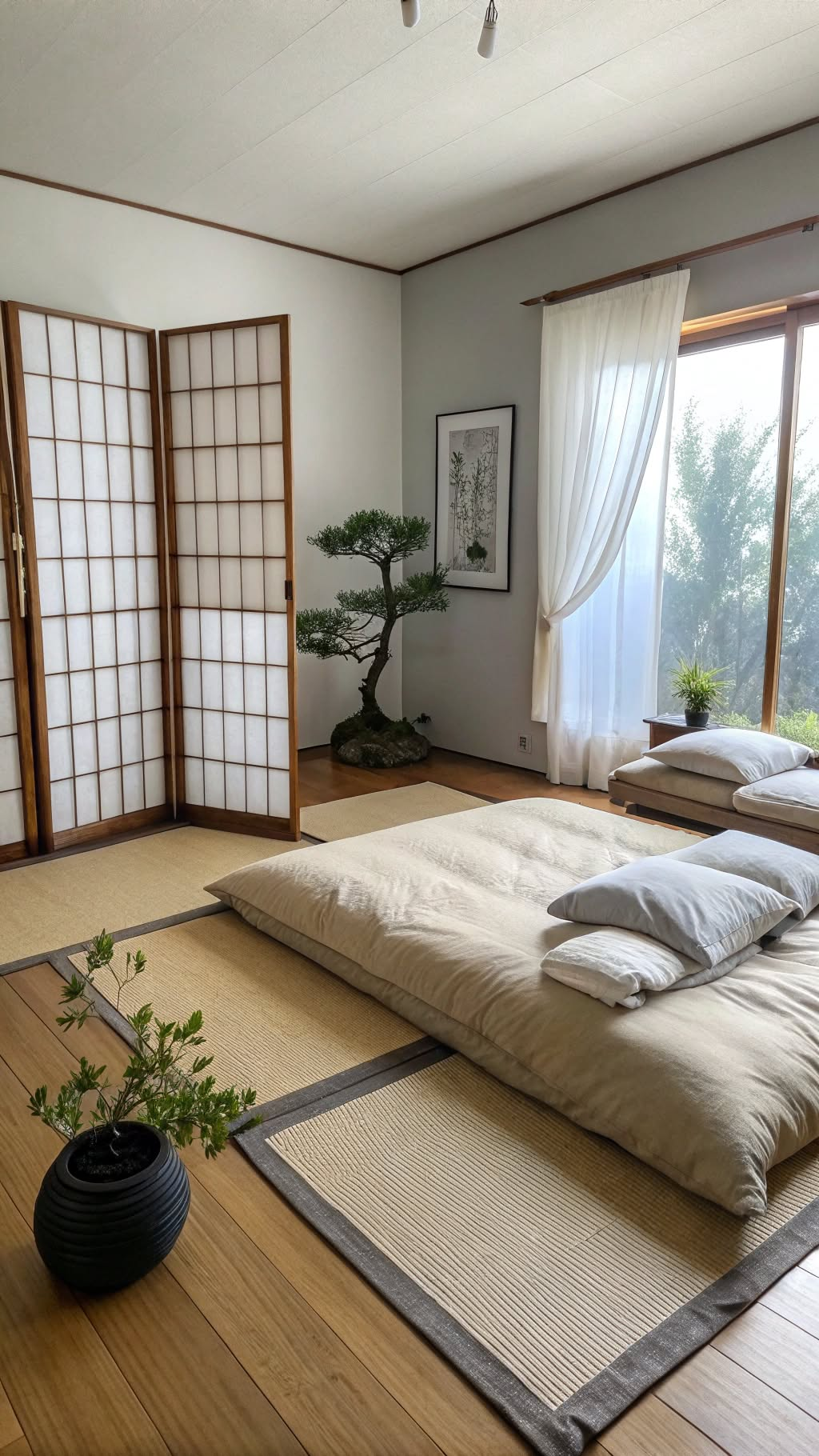
One of the most iconic elements of a Japanese bedroom is the futon bed. Unlike bulky Western mattresses, futons are thin, foldable, and placed directly on the tatami floor. This design not only saves space but also promotes better posture and airflow. Plus, you can easily stow it away during the day to create more room for activities.
To enhance the minimalist vibe, opt for a neutral-colored futon with clean lines. Pair it with a simple wooden frame or place it directly on a tatami mat for an authentic touch. The low profile of the futon also makes the room feel more open and serene.
2. Incorporate Shoji Screens for Privacy
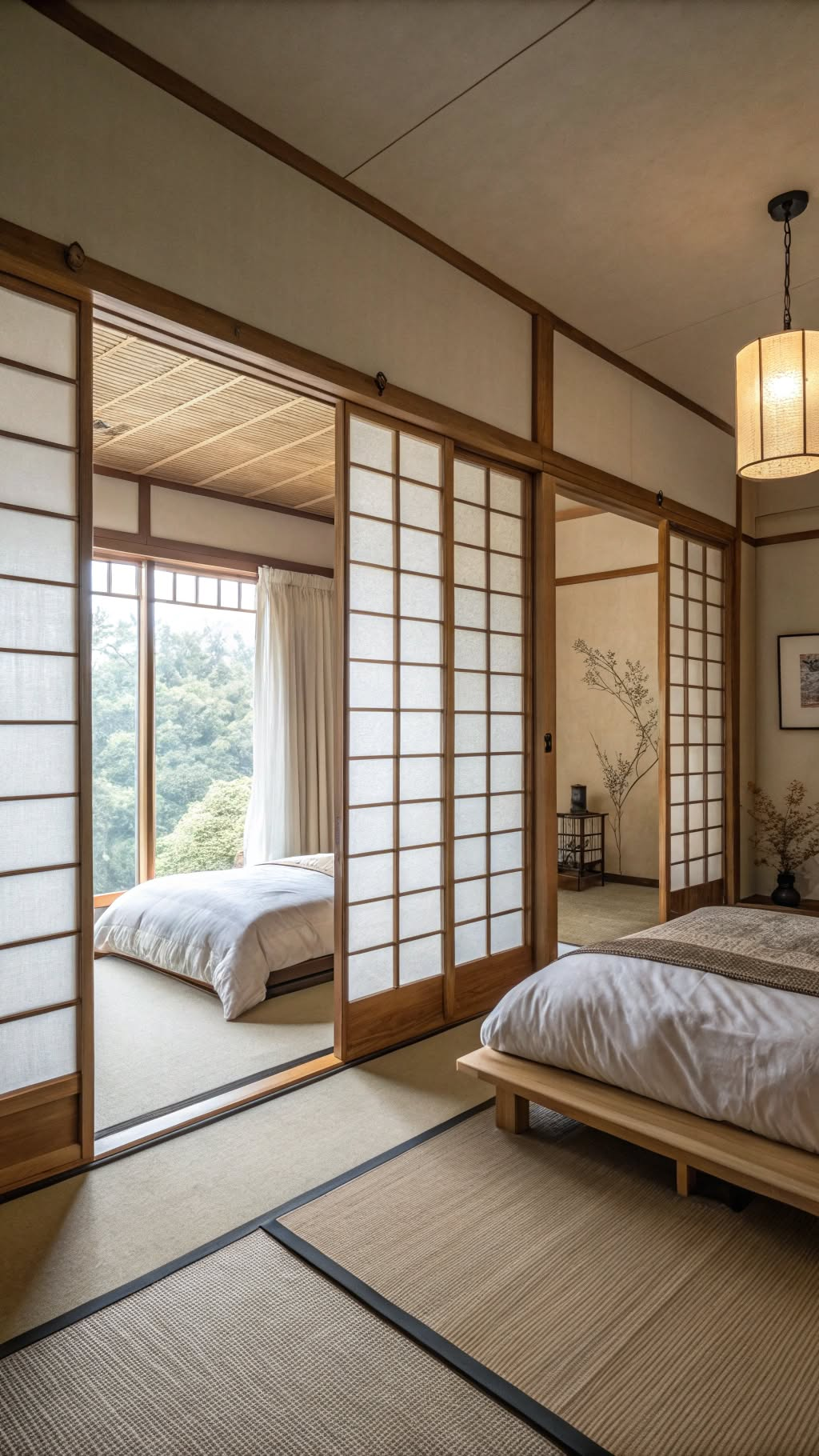
Shoji screens are traditional Japanese sliding doors made of wooden frames and translucent paper. They’re perfect for dividing spaces while allowing soft, diffused light to filter through. Whether used as room dividers or window coverings, Shoji screens add an elegant, timeless touch to any bedroom.
For a modern twist, consider pairing Shoji screens with sheer curtains or placing them near a window to create a calming play of light and shadow. Their lightweight design makes them easy to move, offering flexibility in your room layout.
3. Use Natural Wooden Elements
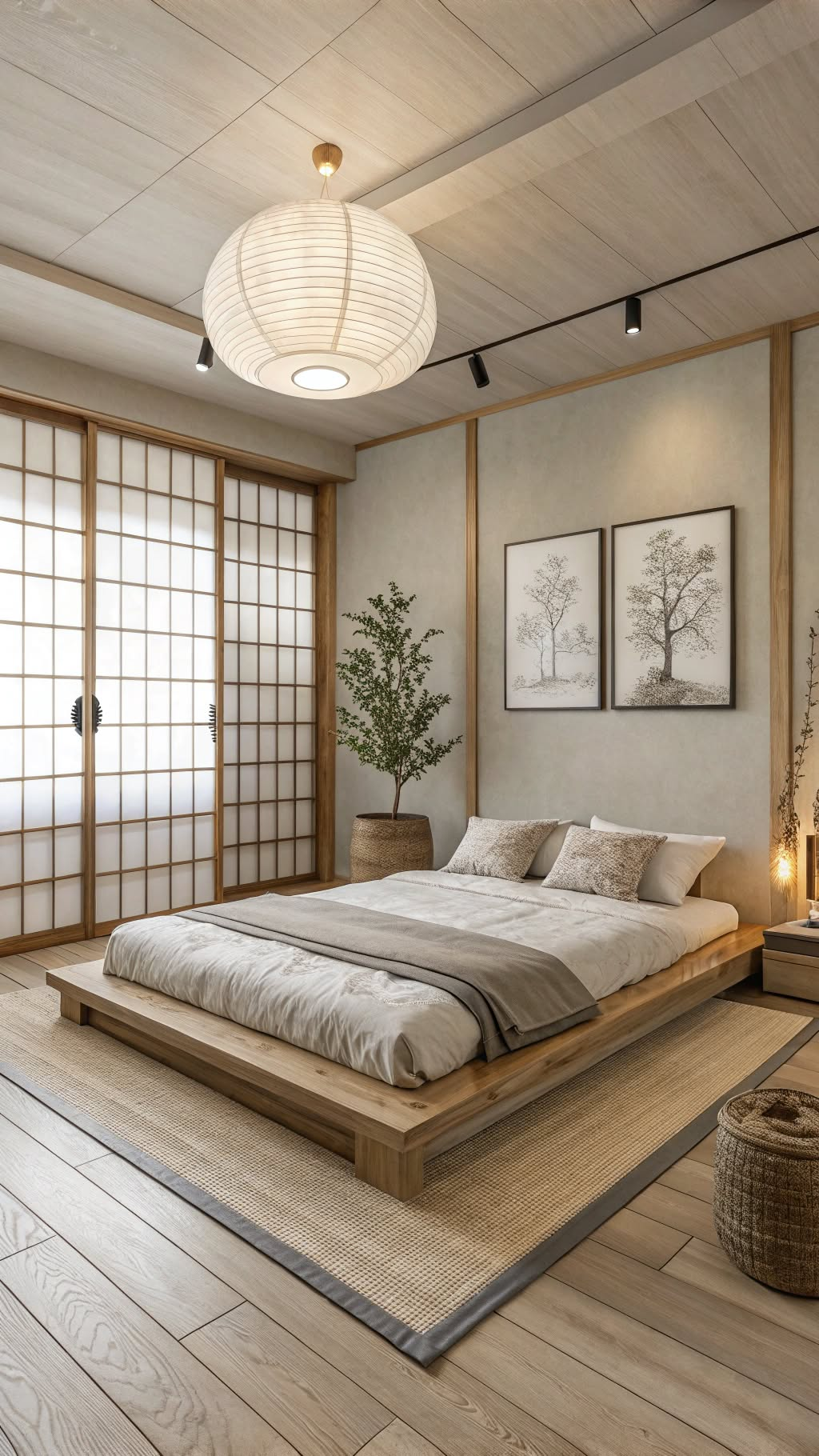
Japanese design celebrates the beauty of natural materials, especially wood. Incorporate light-toned woods like cedar, pine, or bamboo for furniture, flooring, or accent pieces. These materials bring warmth and a connection to nature, which is central to Japanese aesthetics.
Keep the wood finishes simple and untreated to highlight their natural grain. A low wooden platform bed or a sleek dresser can anchor the room without overwhelming it. Pair with linen or cotton textiles for a harmonious, organic feel.
4. Opt for Neutral and Earthy Tones
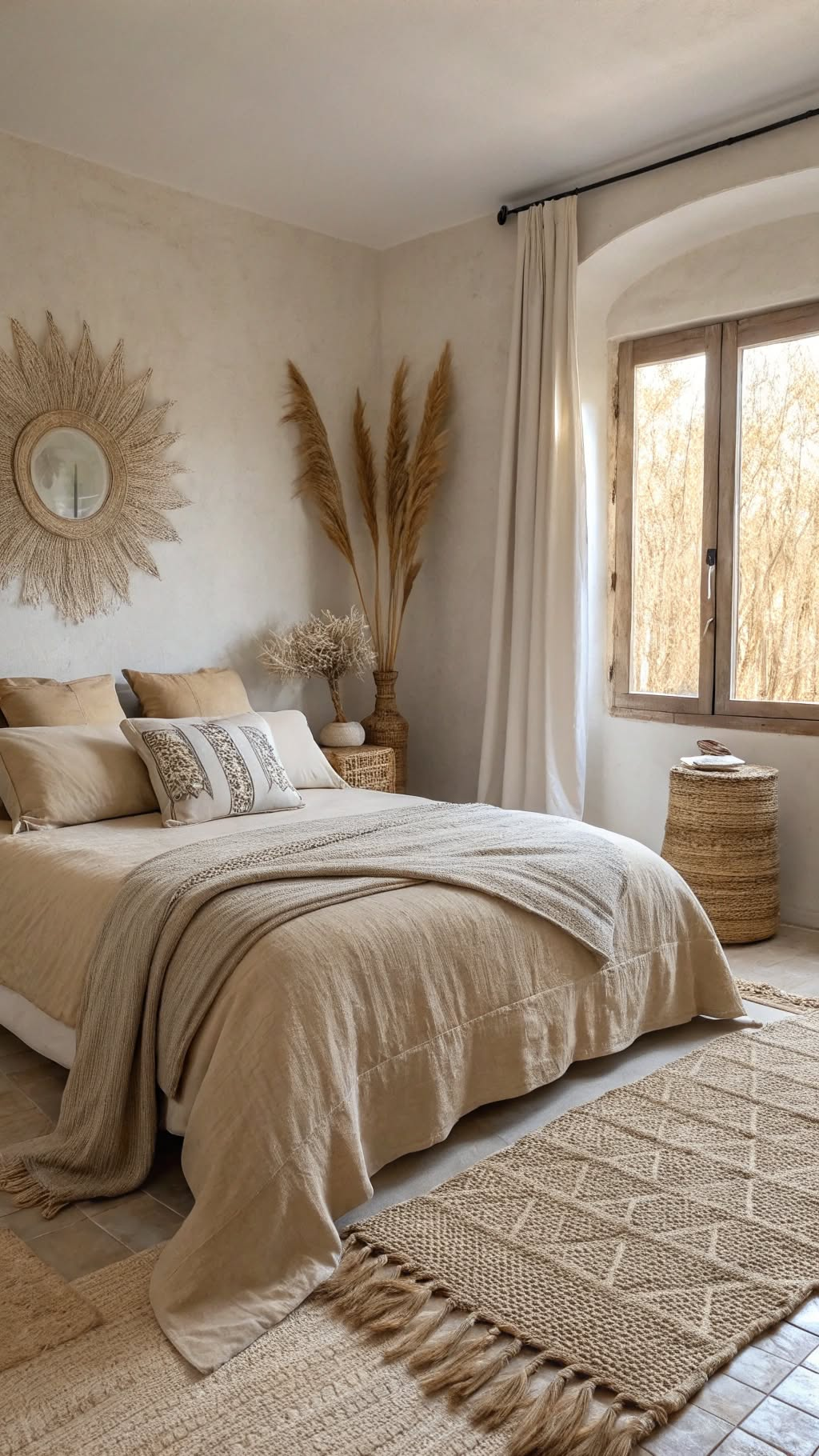
Japanese bedrooms often feature a muted color palette inspired by nature—think whites, beiges, soft grays, and warm browns. These colors create a calming atmosphere and make the space feel larger and more open. Avoid bold patterns or bright hues to maintain the serene vibe.
Add subtle texture with woven rugs, linen curtains, or handmade ceramics in similar tones. The goal is to create a cohesive, restful environment that feels like a retreat from the outside world.
5. Bring in Indoor Plants
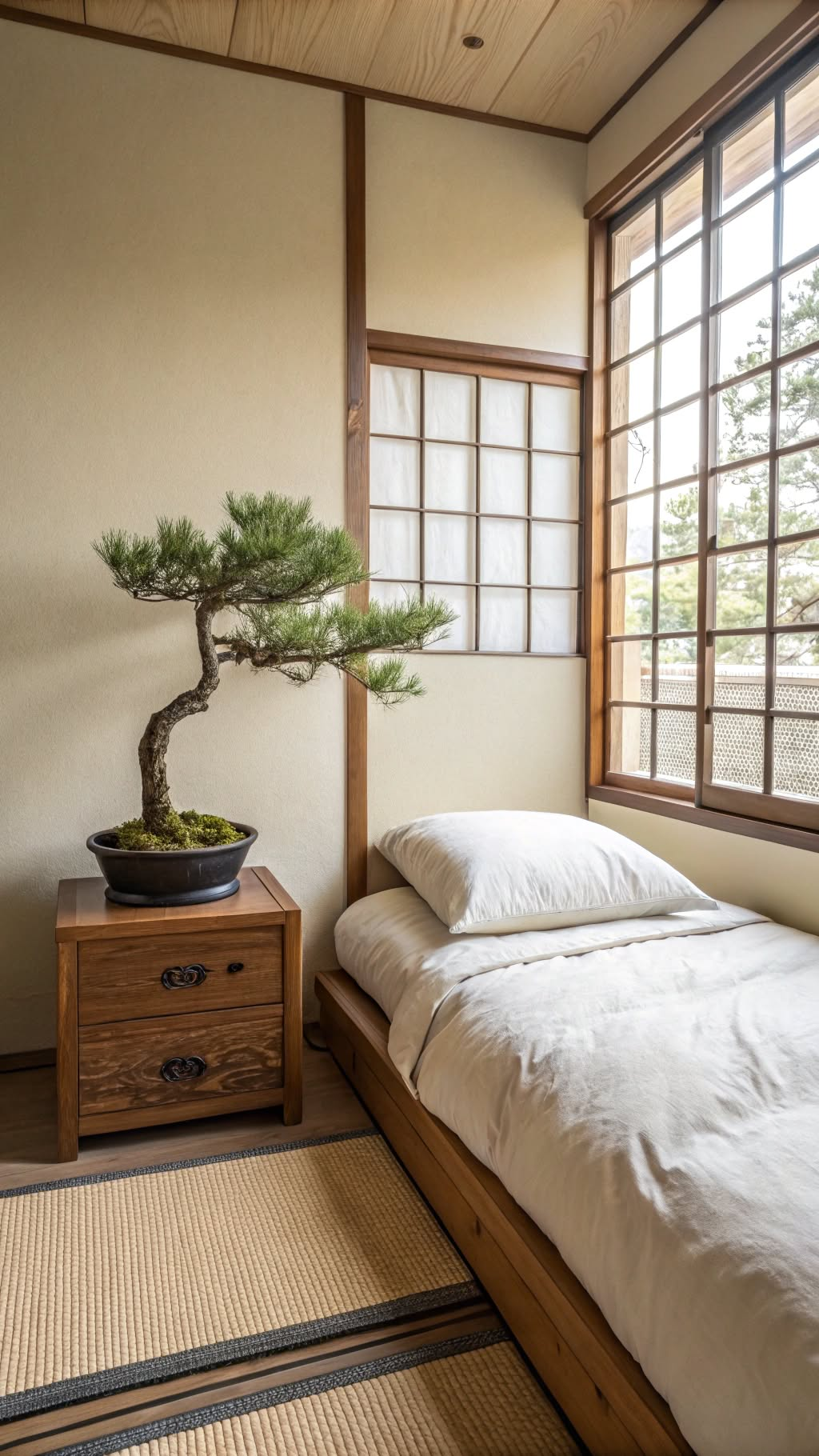
Plants are a staple in Japanese interiors, symbolizing harmony with nature. Small potted plants like bonsai, bamboo, or peace lilies can add life and freshness to your bedroom. Place them on a windowsill, shelf, or in a corner to create a peaceful, organic vibe.
For a low-maintenance option, consider air plants or succulents. Their simple beauty aligns perfectly with Japanese minimalism. Just be sure not to overcrowd the space—less is more.
6. Install Soft, Diffused Lighting
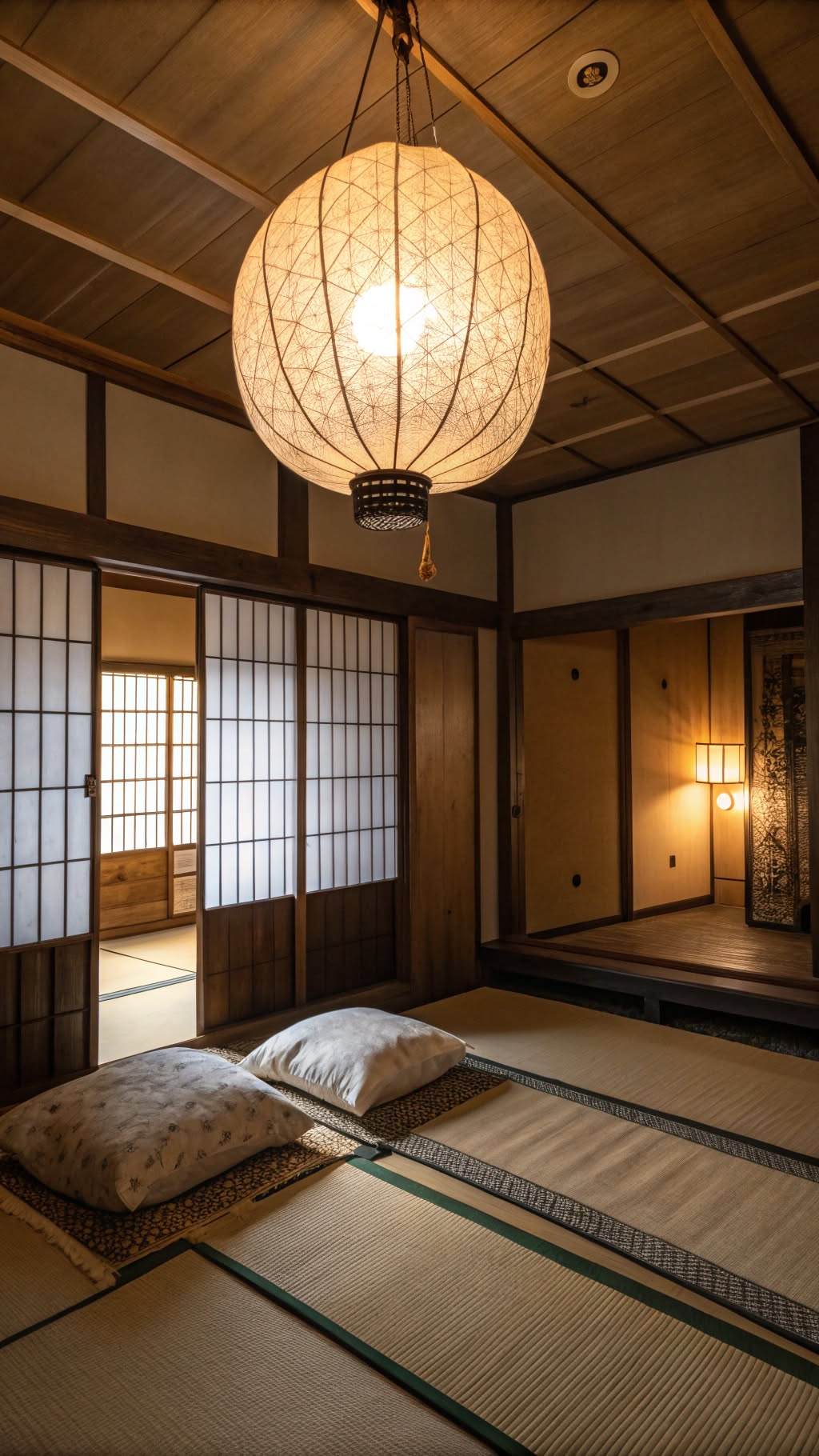
Harsh overhead lights are a no-go in Japanese bedrooms. Instead, opt for soft, indirect lighting like paper lanterns, floor lamps, or pendant lights with warm bulbs. These create a cozy, inviting ambiance perfect for relaxation.
For an authentic touch, try a washi paper lamp or a bamboo-shaded light fixture. Dimmer switches are also a great addition, allowing you to adjust the brightness to suit your mood.
7. Keep Clutter Out of Sight
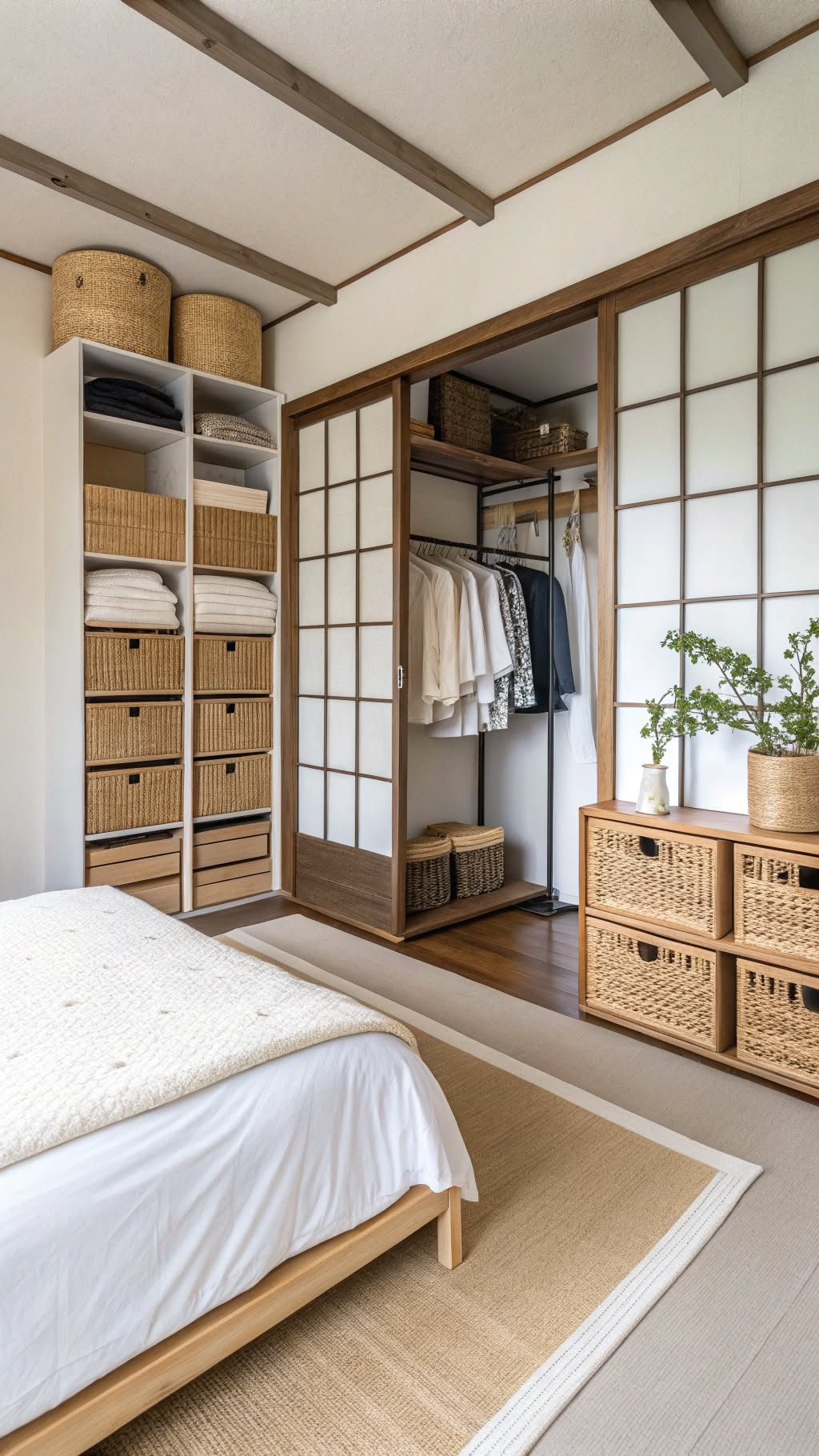
A clutter-free space is key to achieving Japanese serenity. Invest in smart storage solutions like built-in closets, under-bed drawers, or woven baskets. The idea is to keep surfaces clear and belongings neatly tucked away.
Adopt the ‘less is more’ mindset—regularly declutter and only keep items that serve a purpose or bring joy. This practice not only simplifies your space but also your mind.
8. Add a Small Zen Corner
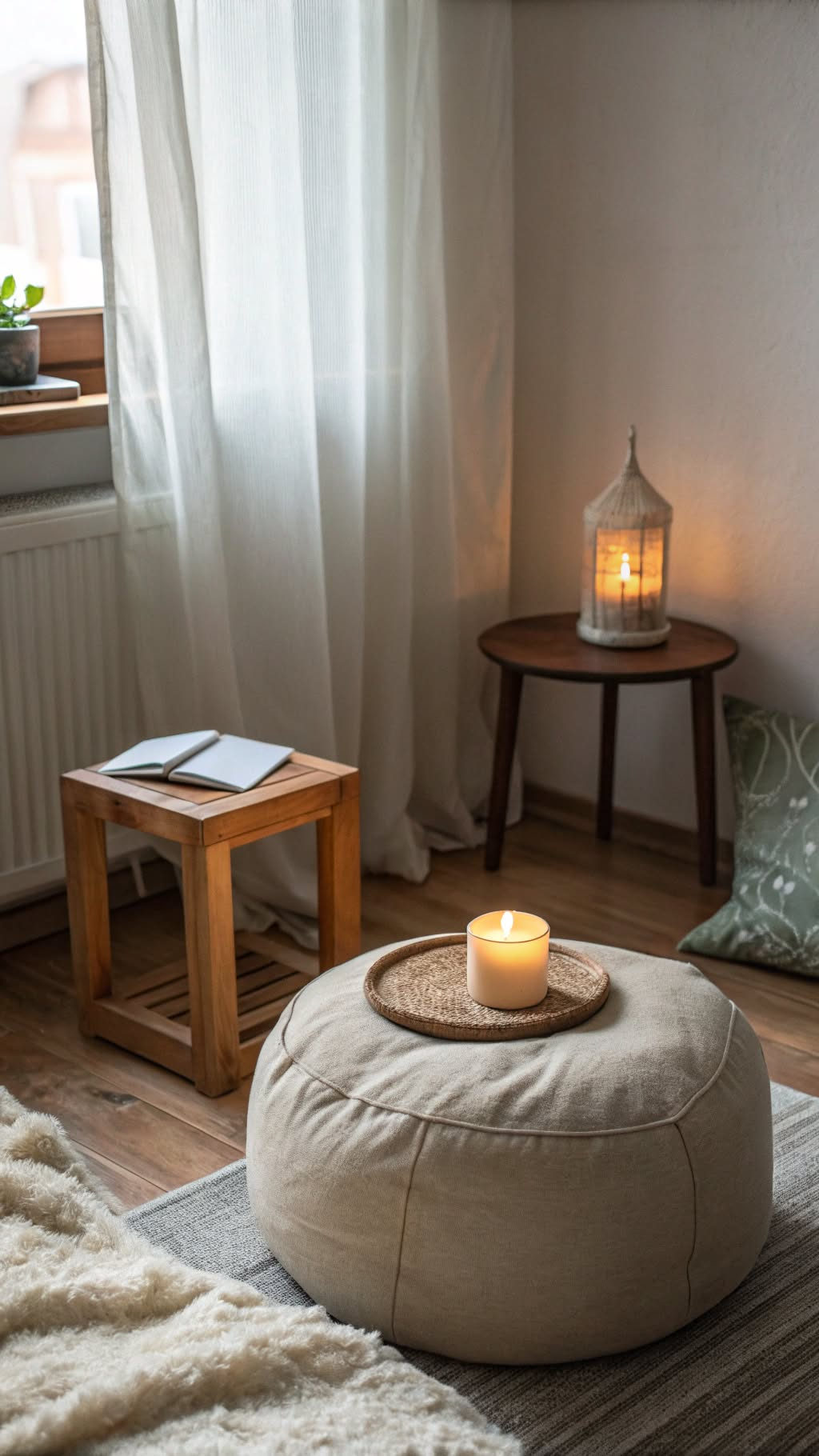
Create a dedicated Zen corner in your bedroom for meditation or quiet reflection. A small cushion (zafu), a low wooden table, and a few calming items like a incense holder or a smooth stone can transform any nook into a peaceful retreat.
Keep this space simple and free of distractions. It’s a place to unwind, breathe, and reconnect with yourself—a core principle of Japanese living.
9. Choose Tatami Flooring or Rugs
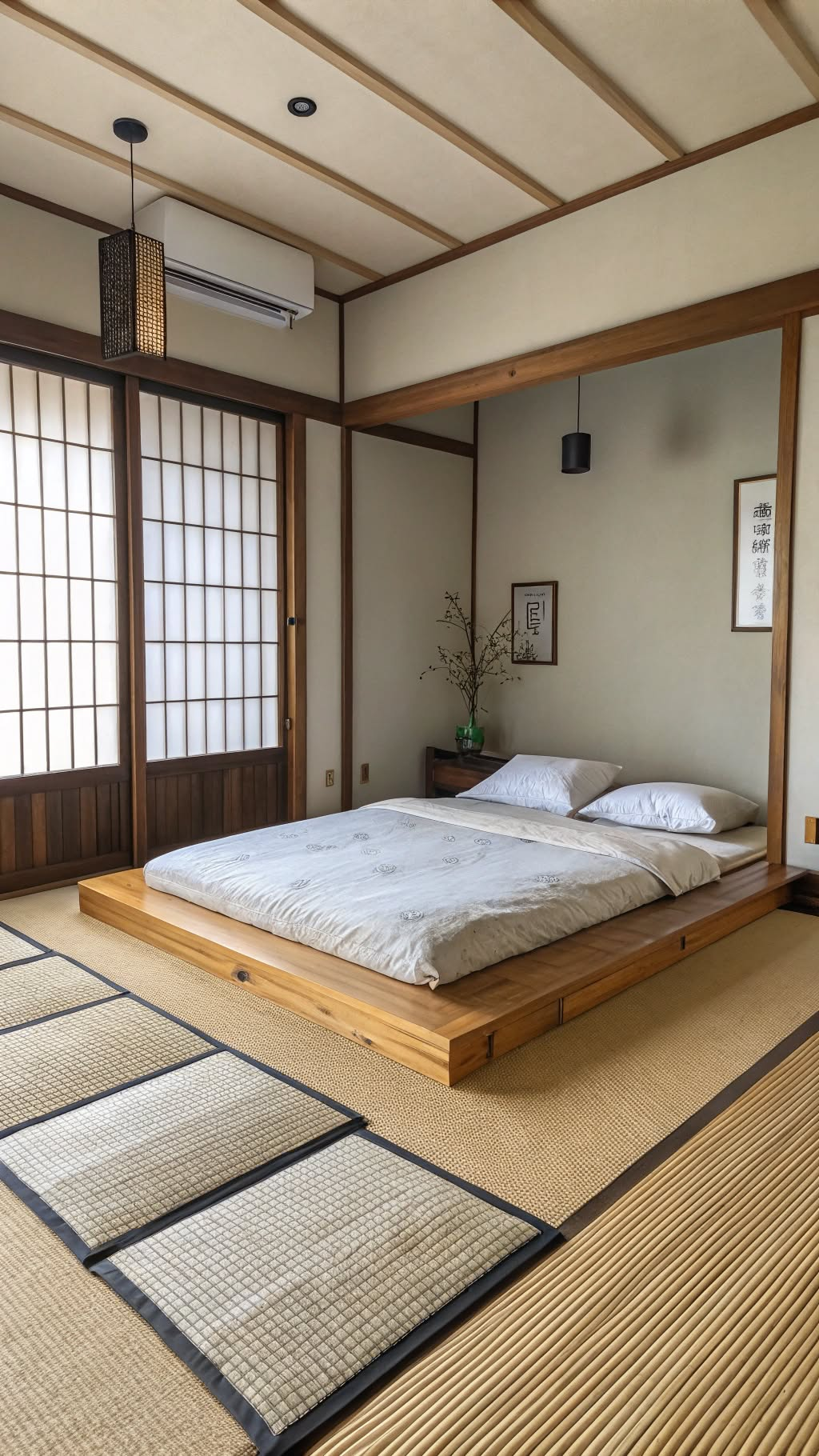
Tatami mats are traditional Japanese flooring made of woven straw. They’re soft underfoot, naturally insulating, and add an unmistakable Japanese charm. If full tatami flooring isn’t an option, tatami-inspired rugs or straw mats can achieve a similar effect.
Pair tatami with low furniture to maintain the authentic look. The earthy scent and texture of tatami also contribute to a sensory experience that’s uniquely calming.
10. Tatami Mats for Authentic Japanese Flooring
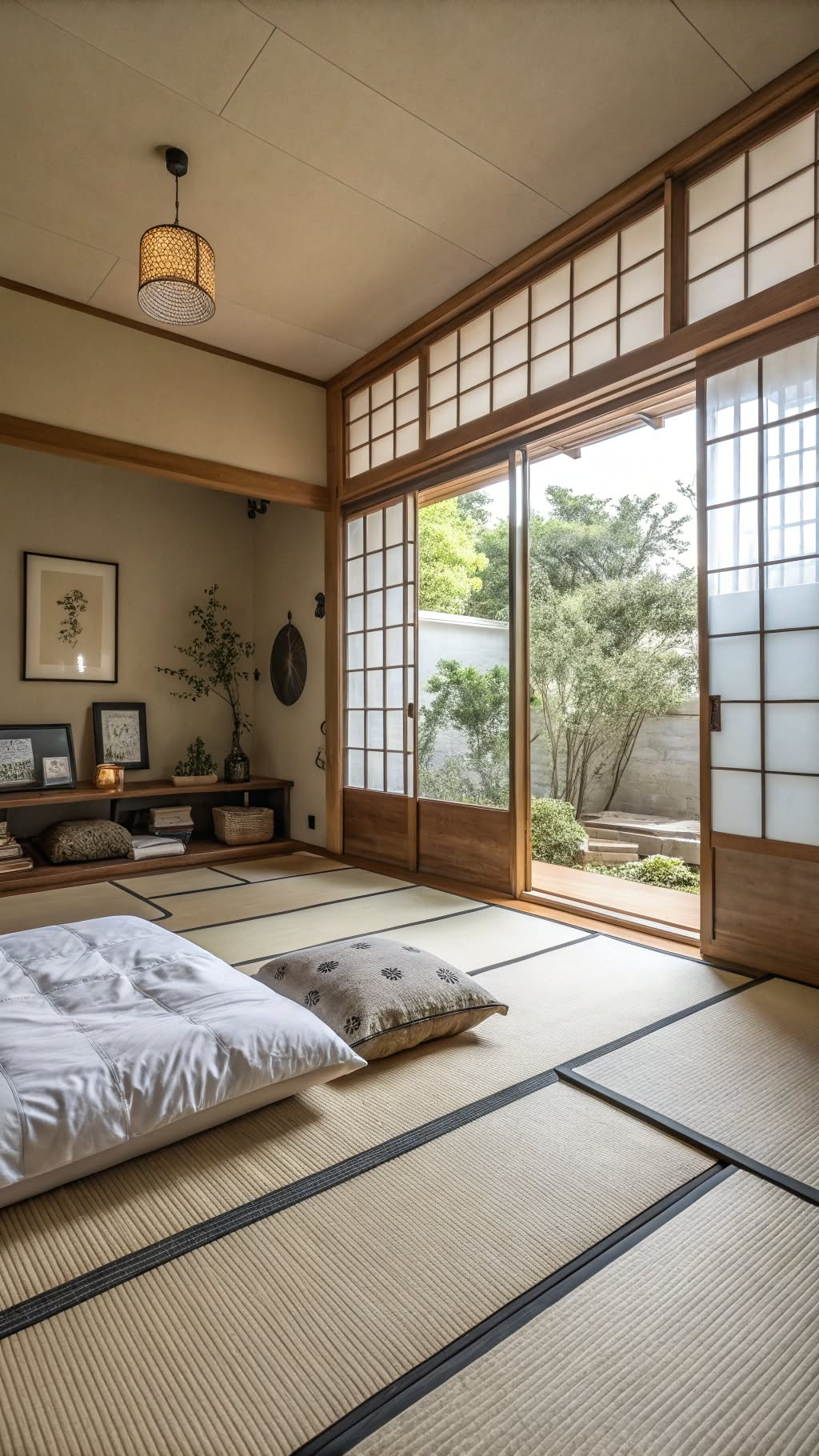
Nothing screams traditional Japanese bedroom quite like tatami mats. These woven straw mats are not only beautiful but also practical, offering a soft, natural surface that’s perfect for sitting or sleeping. Tatami mats are often paired with futons, creating a low-profile, minimalist sleeping area that feels grounded and serene.
Besides their aesthetic appeal, tatami mats are known for their durability and ability to regulate humidity, making them ideal for any climate. Whether you cover your entire floor or just a section, tatami mats instantly transform your space into a peaceful retreat. Pair them with light, neutral tones to enhance the calming effect and keep the focus on simplicity.
11. Incorporate Natural Wood Elements
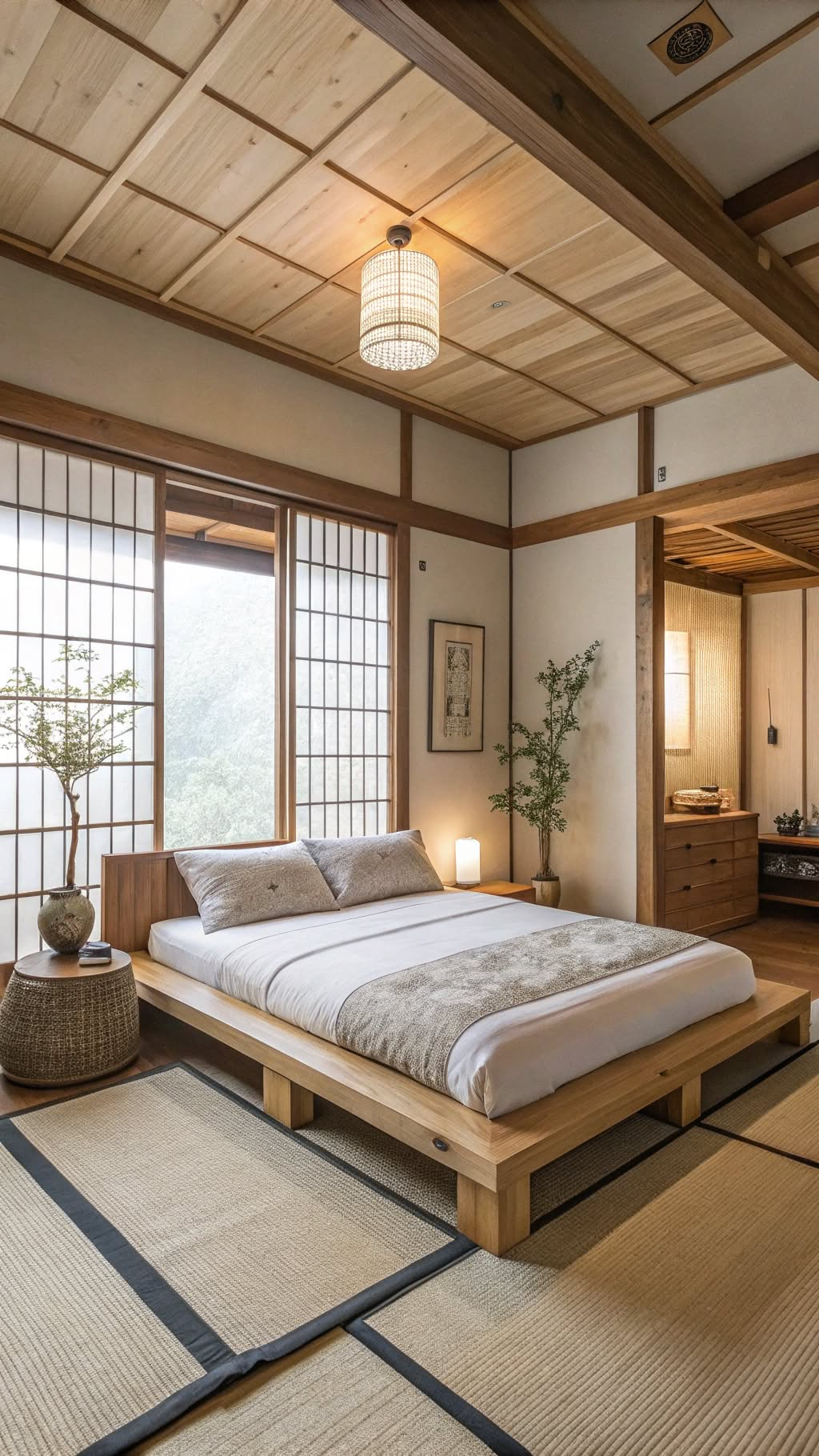
Wood is a cornerstone of Japanese design, and incorporating it into your bedroom can bring warmth and balance to the space. Think exposed wooden beams, sliding shoji doors, or even a simple wooden headboard. The key is to choose light, natural wood tones like cedar or pine to maintain that airy, uncluttered feel.
If you’re feeling adventurous, consider adding a wooden platform bed or a low wooden bench at the foot of your bed. These elements not only add functionality but also create a sense of harmony with nature. Pairing wood with soft textiles like linen or cotton ensures your bedroom remains cozy and inviting.
12. Use Shoji Screens for Privacy and Light
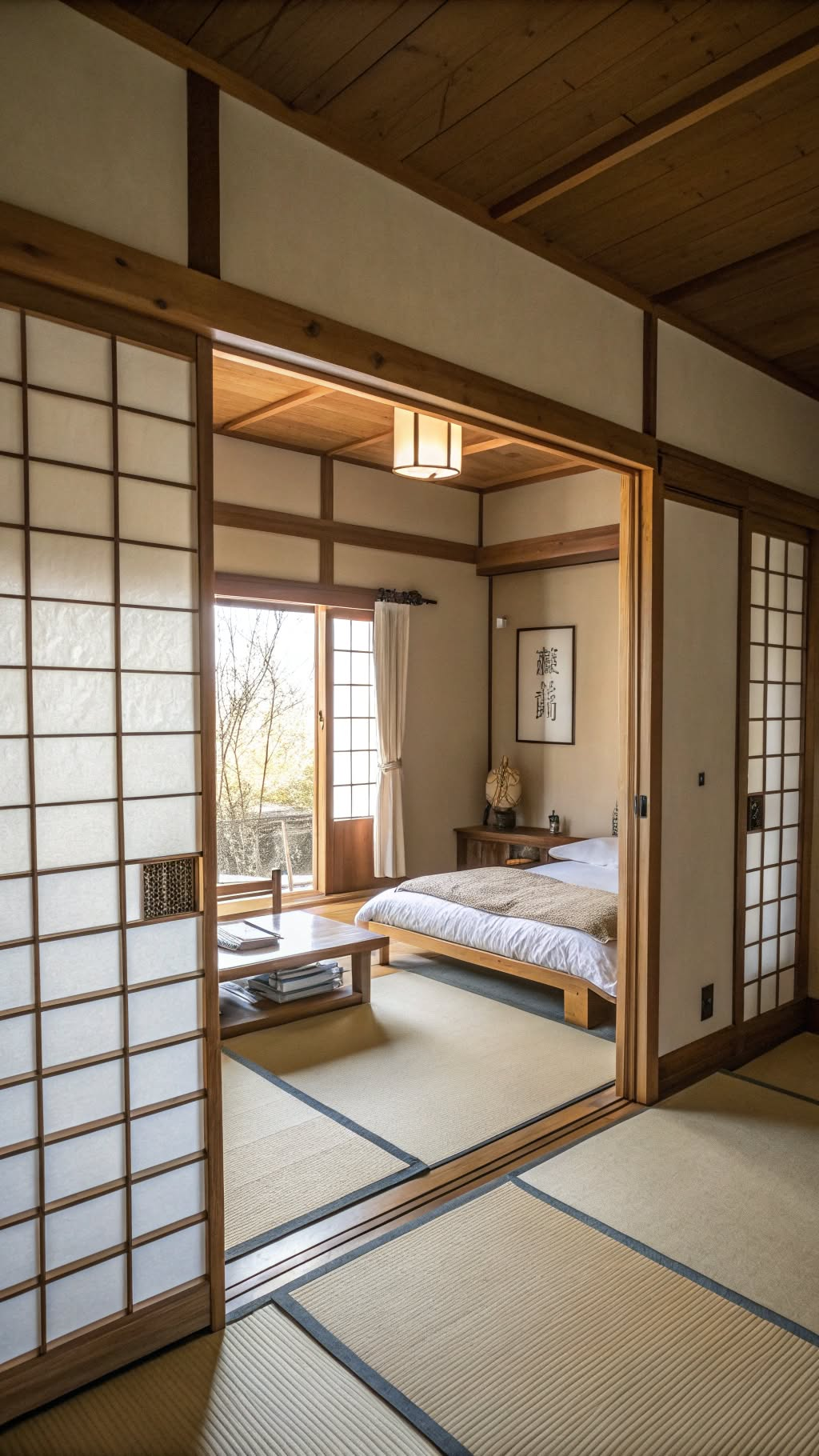
Shoji screens are a quintessential Japanese design element that adds both functionality and beauty to your bedroom. These sliding screens, made of wooden frames and translucent paper, allow natural light to filter through while providing privacy. They’re perfect for dividing spaces or covering windows without blocking light.
Shoji screens also bring a sense of tranquility to your bedroom, creating soft, diffused lighting that’s ideal for relaxation. Whether you use them as room dividers or window coverings, they add an authentic touch to your space. Pair them with minimalist furniture to keep the focus on their delicate, understated beauty.
13. Embrace Minimalist Storage Solutions
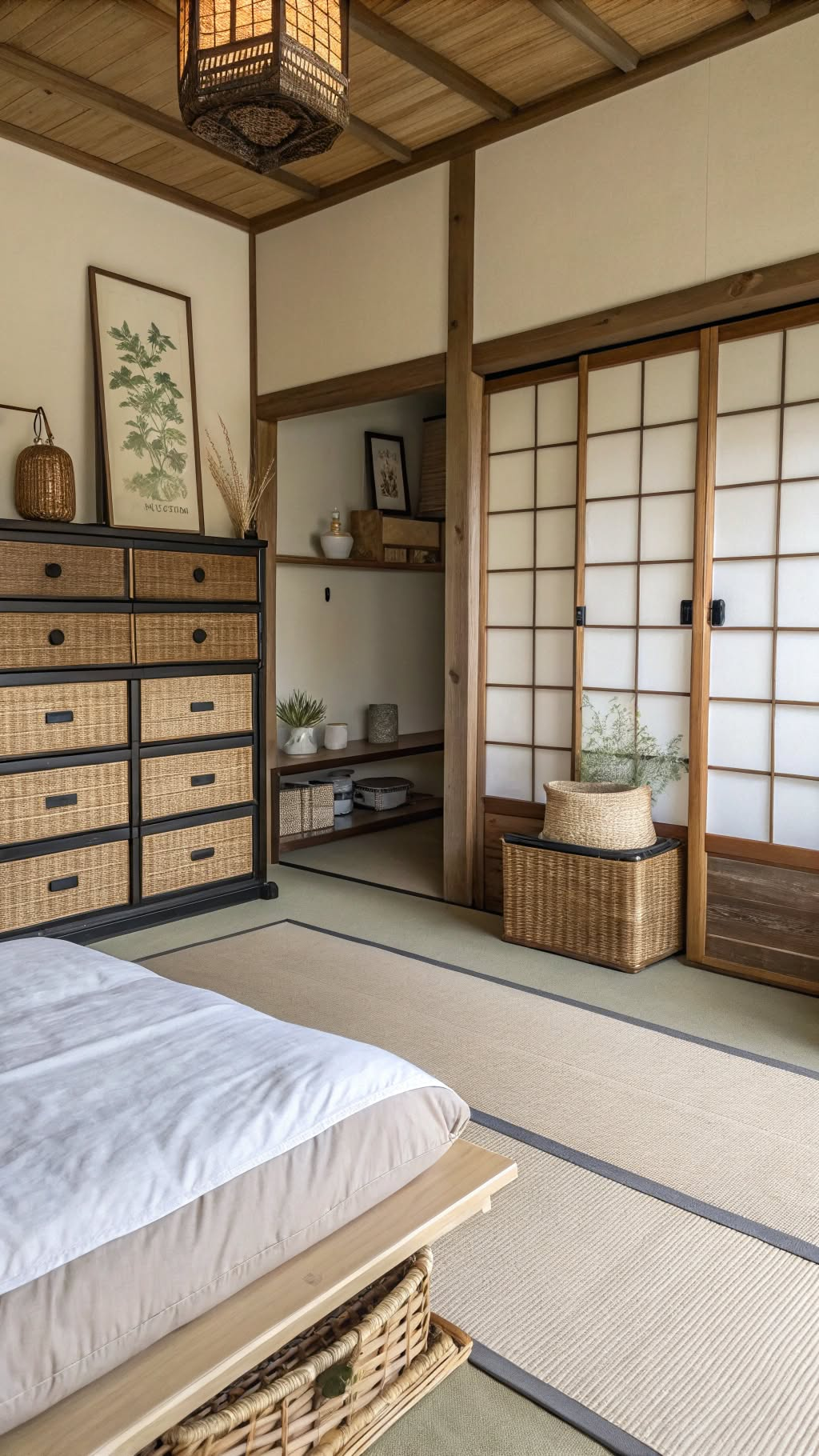
Clutter is the enemy of serenity, and Japanese bedrooms are all about keeping things simple. Opt for minimalist storage solutions like tansu chests or low-profile cabinets that blend seamlessly into your space. These pieces are not only functional but also add a touch of traditional Japanese charm.
When organizing, focus on keeping only what you need and storing items out of sight. Use baskets or fabric bins to corsmaller items, and choose furniture with clean lines to maintain the room’s calm aesthetic. The goal is to create a space that feels open and uncluttered, allowing you to fully relax.
14. Add a Zen Corner for Meditation
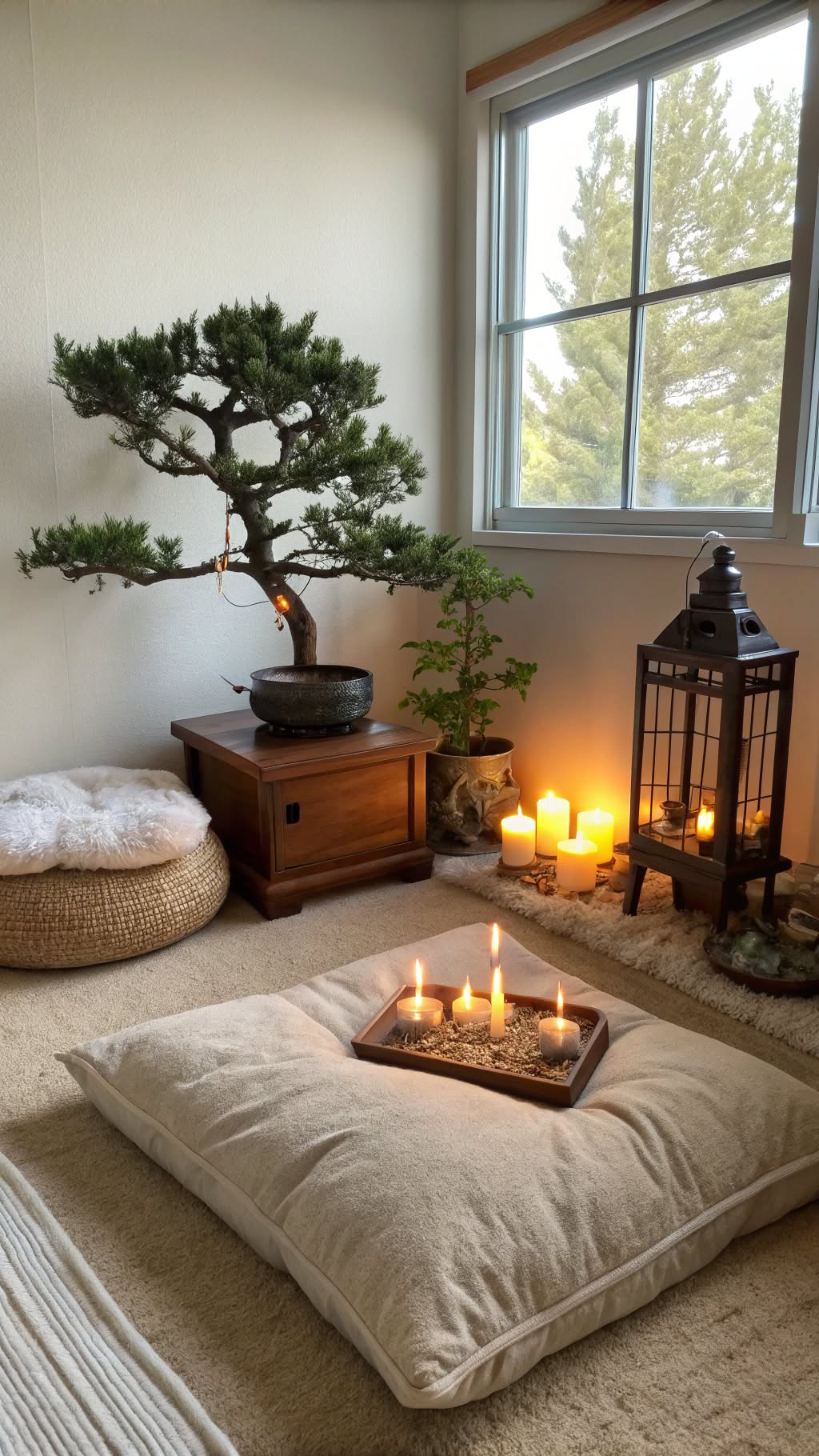
Why not dedicate a small corner of your bedroom to mindfulness and relaxation? A Zen corner can be as simple as a floor cushion, a small meditation altar, or a calming plant arrangement. This space serves as a reminder to pause, breathe, and reconnect with yourself amidst the chaos of daily life.
Include elements like a bonsai tree, a small water feature, or a piece of Japanese calligraphy to enhance the Zen vibe. Keep the area free of distractions and clutter, allowing it to become a sanctuary within your bedroom. Even just a few minutes spent here can make a world of difference to your mental well-being.
15. Introduce Soft, Neutral Lighting
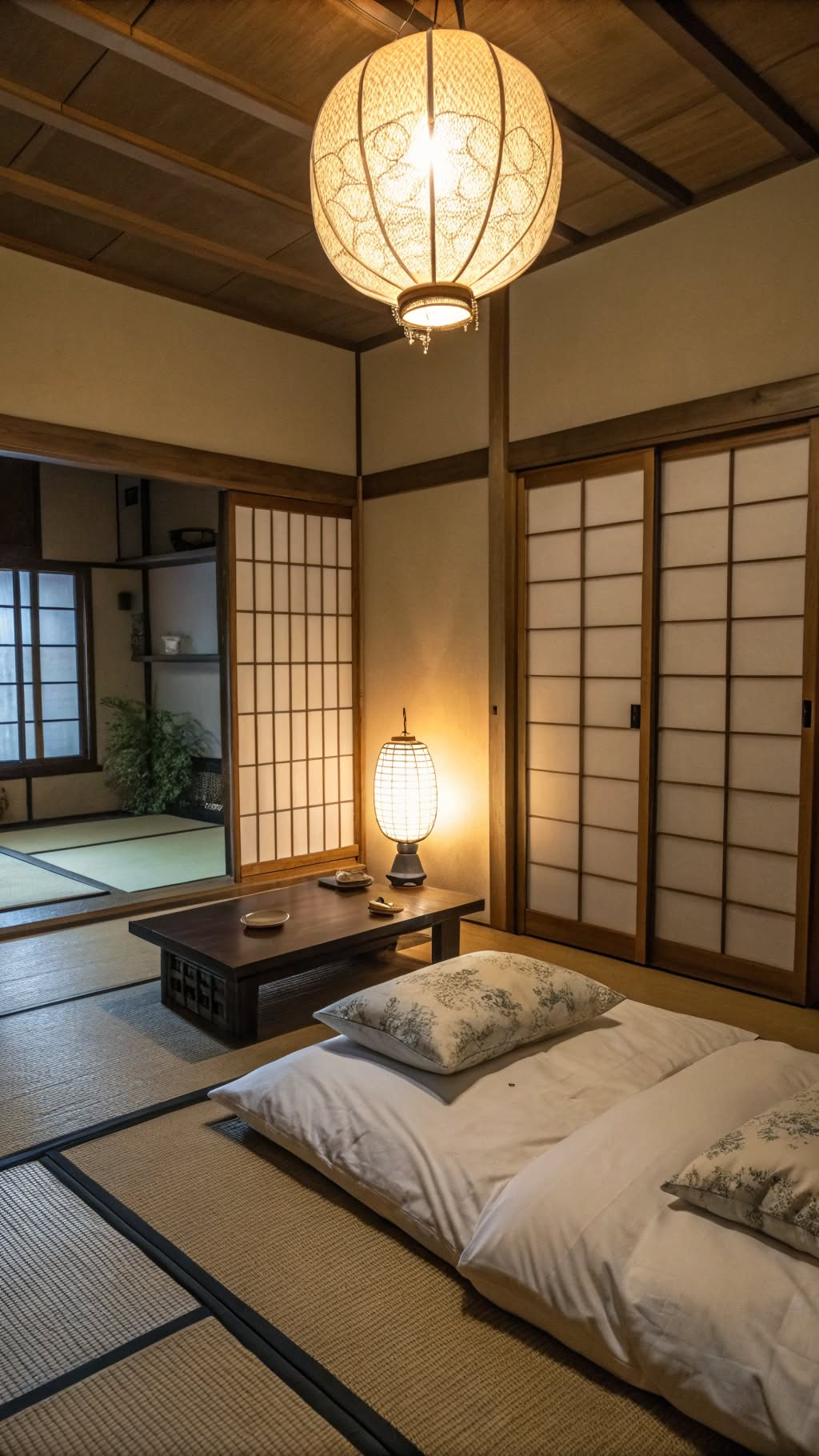
Lighting plays a crucial role in creating a serene atmosphere, and Japanese bedrooms often favor soft, diffused light over harsh overhead fixtures. Consider using paper lanterns, rice paper lamps, or dimmable wall sconces to achieve a warm, inviting glow. These lighting options are both functional and aesthetically pleasing.
To enhance the calming effect, opt for warm white bulbs and avoid overly bright lights. Layering your lighting—using a combination of floor lamps, table lamps, and wall sconces—can create depth and warmth in your bedroom. The goal is to mimic the soft, natural light that’s so integral to Japanese design.
Conclusion
And there you have it—15 Japanese bedroom ideas to bring serene simplicity into your space! From tatami mats and shoji screens to minimalist decor and natural wood accents, each concept is designed to create a calming, clutter-free environment. Whether you’re drawn to the traditional aesthetics or the modern interpretations, these ideas can help you craft a bedroom that feels like a peaceful retreat. So, why not take a step toward tranquility? Start with one or two elements that resonate with you, and let your bedroom transform into a haven of rest and relaxation. Sweet dreams!
